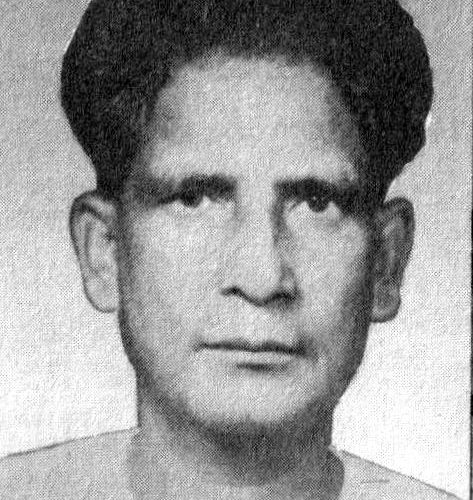Narayana Rao, Adivi Bapiraju, Jayanti Publications. Karl Marx Road, Vijayawada. Price: Rs 25-00 pages; 516.
The novels under review so far were published much earlier. The new editions have different price tags.
Narayana Rao was set in modern times as against Adivi Bapiraju’s more popular historical narratives. One interesting aspect to remember before reading this novel is that it was history in the making for the writer. For us, the readers of today, it is of historical significance as it is set in pre independence India and details the freedom movement. The aspects of British Rule in India, Gandhi’s salt satyagraha, Congress’s demand for poorna Swaraj and many issues of contemporary relevance find their place in the discussions and also take a lot of space in the backdrop of the narrative. This novel cannot be described as a historical novel. It tells the story of an arranged marriage between an educated youth from a rural background and a girl from an aristocratic urban based zamindar family. It blossoms as a romance between the protagonist Narayana Rao and his wife to be Sarada in a gradual manner as they were total strangers to each other before the marriage. On the final count it emerges as a comment on arranged marriages.
When the story opens Narayana Rao was travelling from Madras (now Chennai) to his village with five of his friends Parameswara Rao, Raja Rao, Rajeswarudu, Lakshmipati and Alam, after finishing his exams. The train stopped at Vijayawada station. As the governor was on his way their train was stopped for a long time at the station. All of them get off the train and wander around after finishing their morning breakfast. Narayana Rao wandered into the Higginbotham’s book stall and was going through the titles of the books. He was thus noticed lost in thought by the zamindar of Viswalapuram, a member of the state legislature. He was, on the first glance impressed by him and started chatting with him. Normally reticent and reserved Narayana Rao politely answered all his questions, one of which was if he was married. Surprised at the this question he kept quiet and as the zamindar apologised for his curiosity, Rao told him that he was not married yet. They go back to their respective compartments. After the train started its movement the zamindar joined them in the compartment and engaged them all in conversation. All the friends enthusiastically participated in the conversation. Rajeswarudu knew him well and through him the zamindar requested them all to break their journey for one day at Rajahmundry and be his guests. They all hesitated but finally agreed to his request, He left them all to meet them at the Rajahmundry station. During the conversation it emerged that his strange interest in Narayana Rao was because he happened to have a daughter to be married and he wanted to invite him to arrange for him to meet the girl. They all started joking and teasing Narayana Rao who felt awkward at the whole situation.
The zamindar reached home and told his family—wife, her sister and his daughter—about the visit of the prospective bridegroom who he was sure would be an excellent choice for his daughter Sarada. Theirs was an aristocratic family with a huge palatial house that overlooked a wide garden. The wife and her sister were initially unimpressed as the boy belonged to a village as against their urban aristocratic lifestyle.
Narayana Rao visited the zamindar’s house along with two of his friends Parameswara Murthy and Lakshmipati, who also happened to be a cousin and brother-in-law of Narayana Rao. Narayana Rao was immediately on first sight impressed by the appearance and the musical talent of Sarada, who was a disciple of a famous violin guru Ramayya. She sang and played the violin very well during their meeting. Inspired Narayana Rao also played violin. They then took their leave and left for their village.
Narayana Rao reached home and was warmly welcomed by his parents, brother sister-in law and sisters. He has two younger sisters, the elder sister being the wife of Lakshmipati. During the dinner time the topic of visit to the zamindar was discussed and both Narayana Rao’s brother and father had a very high opinion of the zamindar. The issue of marriage was discussed and they came to the conclusion that there was a wide status gap between the two families and though they were equally rich their culture and lifestyle was far different from that of the zamindari style. Hence, they decided against proceeding any further on the marriage issue. But soon the zamindar comes to their house with his friends and district officials such as the tahsildar and deputy collector and a group of lawyer friends of his. They all convince him and once the marriage is fixed, things move along at a fast pace. The entire first part of the narrative was devoted to the marriage rituals, visits to each other’s house and the gestures of giving and taking gifts. Both the parties competitively distributed gifts to each other’s families. The marriage took place in the zamindar’s palace with all the glitter and grandeur that befits a royal family.
Narayana Rao’s family too gave gifts. However, there is more dignity and honour in their gestures there as against the show and pomp of zamindar’s family. Striking differences between the two rich families were shown. The simplicity and the natural and spontaneous generosity of the hosts in Narayana Rao’s household against the show of hospitality by the members of the zamindar’s family, other than the zamindar himself. The zamindar could recognise the genuine culture and goodness of heart of his son-in-law and the members of his family that convinces him of the appropriate choice he made for his daughter. Sarada was clueless as to how to adjust and therefore, to some extent she is a bit indifferent to her new family. She found the natural affections shown by her in-laws very strange. She felt comfortable only after she reached her father’s house after marriage. In the later part of the novel each of his friends who have influenced his sense of appreciation of art and literature were given an elaborate introduction. All of them were married early and one notices a certain lack of compatibility in the married relationships of all his friends. There is great respect for the institution of marriage and family but in today’s context, they are all based on practical aspects of same caste, same social background and social status and comfort than love and individual choice. The attachments are loyal and true but do not touch a chord in the readers because of the changed social circumstances in the modern times.
The story revolves around the relationship between the main characters Narayana Rao and Sarada. She gradually tries to get used to the idea of Narayana Rao though her attachment with her cousin Jaganmohan Rao continues. Her mother was more interested in giving her daughter in marriage to Jaganmohan Rao, as he was her nephew and belonged to another zamindar family. He continued to have designs on Sarada, even though she was innocent of his evil designs. However, when Sarada’s mother fell sick with typhoid Narayana Rao took such good care of her by constantly staying by her side that it helped him win over his mother-in-law’s heart. He also overhears, in her sickness about her aversion to her son-in-law. Narayana Rao understood the reason for Sarada’s indifference to him. She has been constantly brainwashed into thinking poorly of Narayana Rao’s village background and appearance. One incidence of Jaganmohan Rao imposing himself on Sarada against her will also opened Varada Rajeswari Devi’s eyes to the nature of his character. He was banished from entering their house. Keshav Rao, Sarada’s younger brother gets closely attached to his new brother-in-law. The story moves towards a happy ending when Sarada finally falls genuinely in love with Narayana Rao and her prejudices also disappeared when she starts admiring his affinity and quiet pride in in his land and cattle. The story ends with the grand plan of Narayana Rao who ideologically starts a gurukul for teaching painting sculpture, music and poetry under the overall supervision of his father.
What do we like in this novel, which on the surface of it, appears like the story of an arranged marriage which blossomed into a good relationship. But there are aspects of the novel which make the readers nostalgic about the days of freedom struggle, the days, when high ideological fervour and raging debates about the British in India and the Indian desire for self-rule. The names we come across are the actual people who participated in the freedom struggle. The painters like Avanindra Ghosh, poets like Tagore, dancers like Rukmini Devi, bring the novel closer to reality. The days gone by stand testimony to the great times that India witnessed on cultural front under Bengal Renaissance. Only one thing might prick our curiosity is the author’s detailed descriptions about the Brahmin community and the practices and rituals associated with them, which were in the immediate experience of the writer. If other communities were presented, they come to us only through the lens of a Brahmin mindset. It was not derogatory but it was not an inclusive perception of society. Rich, educated culturally and artistically sensitive and yet, it still overlooks the other side of the life and so it seems one dimensional.
*









The writer has given an opportunity for the readers to revisit the days-gone-by. Adivi Bapiraju is true to his personal knowledge subjective experience in depicting the social context in his times.
Well reviewed prompting the present generation to read it to know of socio political setting of those days.